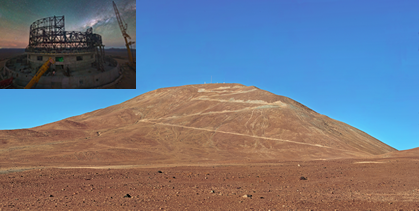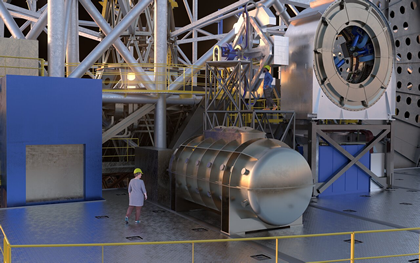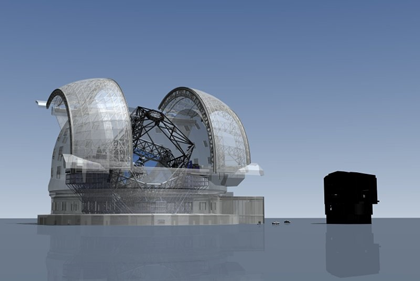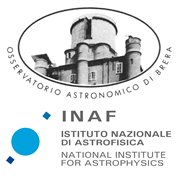
In the tradition of spectrographs - see also the ESPRESSO project - the Observatory is heavily involved in the high resolution ANDES spectrograph which will be installed on the ESO-ELT (Extremely Large Telescope) an extremely large optical telescope being built on Cerro Armazones in Chile (Antofagasta Region) with a primary mirror diameter of 39 meters and which should see the light in 2027. |
 View of Cerro Armazones in the Chilean desert, near ESO"s Paranal Observatory, site of the Very Large Telescope (VLT). Cerro Armazones will be the site for the European Extremely Large Telescope (E-ELT), which, with its 39-metre diameter, will be the world’biggest eye on the sky. The current steep dirt road to the summit can be clearly seen. At the top left you can see completion in July 2023 - Crediti: ESO/S. Brunier |
|||||||||||||||||||||||
This second-phase ELT instrument will combine its high resolution and wide spectral range with the huge surface area of the ELT to produce data with exquisite detail and sensitivity. |
 ANDES Artistic image - Crediti ESO. |
|||||||||||||||||||||||
|
The ANDES project is developed by an International Consortium composed by Research Institutes of 14 Countries: Brazil, Canada, Chile, Denmark, France, Germany, Italy, Poland, Portugal, Spain, Sweden, Switzerland, United Kingdom and USA. Italy participates with INAF and is the leader for the technical part.
|
 The E-ELT here seen in a scale comparison with one of the VLT domes. ESO’s European Extremely Large Telescope (E-ELT) is ranked as one of two top-priority large ground-based projects in the ASTRONET Roadmap for European astronomy, which is backed by the entire European scientific community and supported by the European Commission. The Very Large Telescope (VLT) is a telescope operated by the European Southern Observatory on Cerro Paranal in the Atacama Desert of northern Chile. The VLT consists of four individual telescopes, each with a primary mirror 8.2 m across, which are generally used separately but can be used together to achieve very high angular resolution. Currently the VLT is the most productive ground-based facility for astronomy, with only the Hubble Space Telescope generating more scientific papers among facilities operating at visible wavelengths. The design for the E-ELT shown here was published in 2009 and is preliminary - Crediti ESO. |
|||||||||||||||||||||||
|
|
|||||||||||||||||||||||
| Web page credits: A. Zanutta for ANDES Team - M.R. Panzera | ||||||||||||||||||||||||




 The researchers/technologists of the Brera Astronomical Observatory (OAB) have a fundamental role in the development of the ANDES instrument, as they have established a system engineering team that manages the entire technical part of the instrument.
The researchers/technologists of the Brera Astronomical Observatory (OAB) have a fundamental role in the development of the ANDES instrument, as they have established a system engineering team that manages the entire technical part of the instrument.